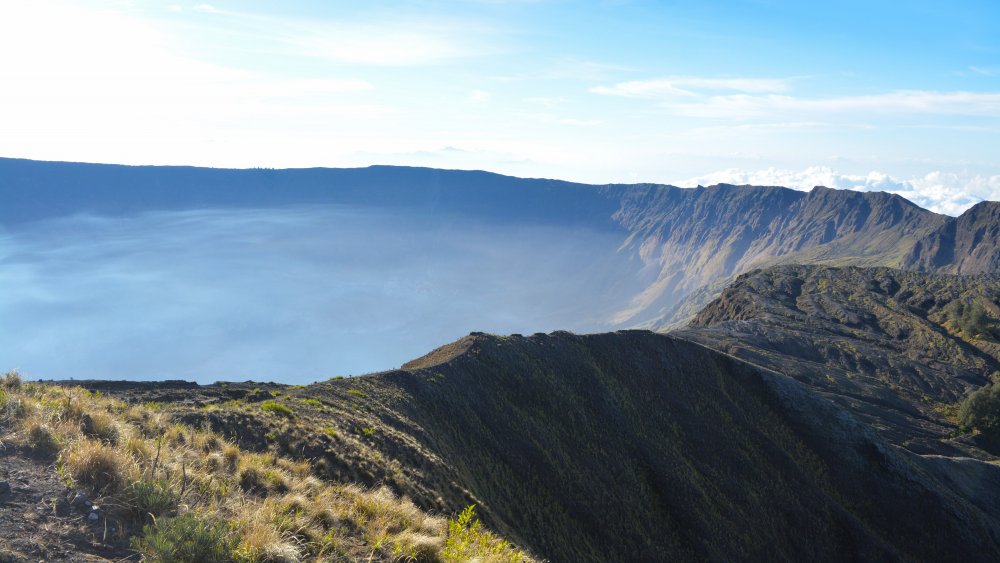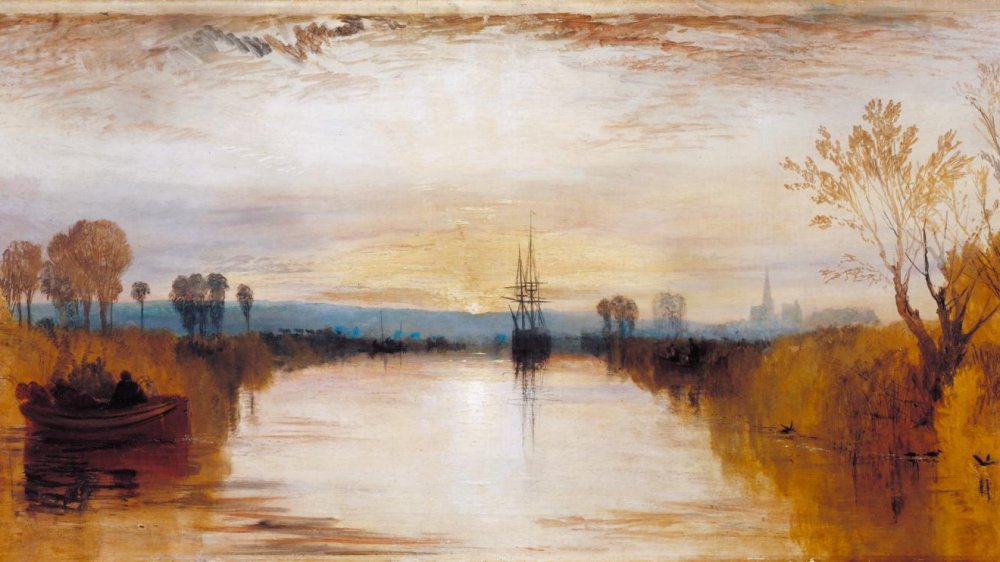The Tragic True Story Of The Year Without A Summer
"It proved a wet, ungenial summer and incessant rain often confined us for days to the house". Thus Mary Shelley remembered the sunless summer of 1816 in which she, her husband Percy Shelley, Lord Byron, and Byron's physician John Williams Polidori told the ghost stories that would birth Frankenstein and the modern vampire. The benefit, however, did not outweigh the cost in human life.
The Year Without Summer, as 1816 was later known as, was caused by a now obscure volcano in Indonesia called Mount Tambora, which erupted with a force that outdid the almost mythic proportions Krakatoa has developed in the imagination. As Thought Co describes, Mount Tambora erupted in April 1815 with its eruption and resulting tsunamis killing about 100,000 people. An eye witness account from the Rajah of Saugar, which was written down by the governor of the then British Dutch East Indies Stamford Raffles, describes the eruption on April 10 1815: "The fires and columns of flame continued to rage with unabated fury, until the darkness caused by the quantity of falling matter obscured it at about eight P.M. [an hour after the initial eruption].... No explosions were heard till the whirlwind had ceased, at about 11, A.M. From midnight till the evening of the 11th, they continued without intermission; after that their violence moderated and they were only heard at intervals; but the explosions did not entirely cease until the 15th of July." The ash released is estimated to have weighed 58 trillion metric tons.
It'll snow in August
The effects of the eruption exceeded the already catastrophic scope of the death and destruction in Indonesia. The University Corporation for Atmospheric Research tells how smaller particles which didn't simply descend upon the islands floated into the stratosphere and over the planet, temporarily blocking out a large proportion of sunshine, an effect appreciated by Turner's painting of Chichester Canal. In an illustration of how low the temperatures dropped, Smithsonian Magazine pointed to the recollections of Virginian native Pharaoh Chesney: "In June . . . another snowfall came and folk went sleighing. On July 4, water froze in cisterns and snow fell again, with Independence Day celebrants moving inside churches where hearth fires warmed things a mite."
In The Conversation, Gillen D'Arcy Wood lists how the eruption spread cholera further by changing the microbes' environment with droughts and flooding. It created a new strain that spread around the globe, claiming tens of millions of lives in Bengal alone. The same outbreak also led to the development of modern medicine and modern medicinal institutions. Simultaneously, Yunnan faced a series of famines that drove farmers to start cultivated opium, another staple of the nineteenth century. It is safe to say that between the scientific advances, the cultural additions, and opium production that the eruption of Mount Tambora constitutes the most defining event of the nineteenth century. Similarly, the course of our century is almost certainly going to revolve around the environmental collapse our planet faces.

